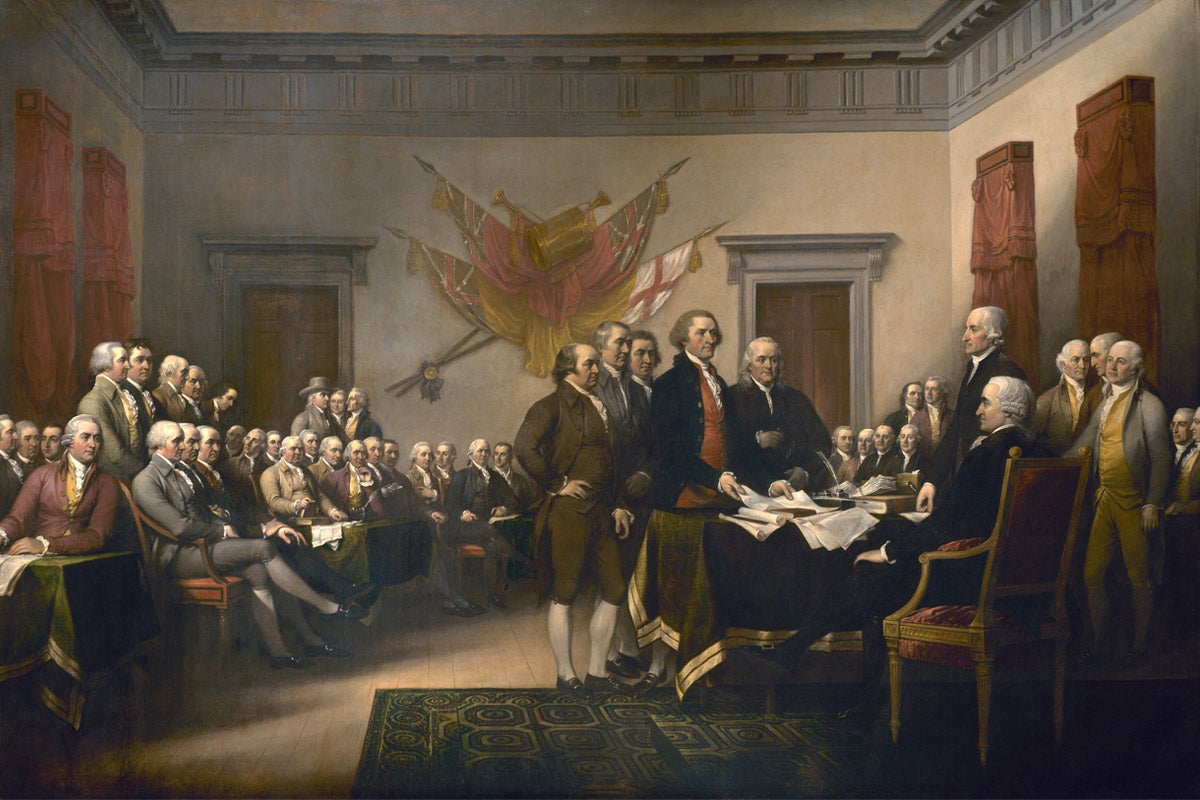UCF lecturer David Head barely needs notes to teach the course U.S. History: 1492-1877. He wrote a book on early America, edited the 300,000-word Encyclopedia of the Atlantic World, 1400–1900, and is currently in the middle of another three-year book project focused on George Washington.
Did you know? It took six months for all the signatures to be compiled for the Declaration of Independence.
His inspiration for keeping history alive?
“My mom,” says Head. “She wrote down everything that happened to my five siblings and me, and turned it into a daily calendar so we’d never forget the facts.”
Here are some facts he’s shared about our nation’s founding
- The Declaration of Independence was not signed on July 4
Thomas Jefferson presented a draft of what would become the Declaration of Independence in the days before July 4, 1776. The full Congress debated, revised and edited the document on July 2 and July 3. By July 4, they ratified the wording. But the formal copy of the Declaration of Independence wasn’t officially finalized until two weeks later and it wasn’t signed until August 2. John Trumbull’s famous painting of Jefferson, John Hancock, John Adams, Ben Franklin, and Roger Sherman does not depict the signing — it is them presenting the draft on June 28, 1776.
- Attendance for the signing wasn’t so great
With no FedEx available, the document stayed in Philadelphia until each of the 56 delegates could eventually travel there by horse. It would take six months for all the signatures to be compiled. Thomas McKean of Delaware was the last person to sign, possibly as late as 1777 (the actual date is disputed), though some copies of the declaration do not have McKean’s name on them.
- About the signers
Two 26-year-olds from South Carolina were the youngest to sign the Declaration of Independence (Thomas Lynch Jr., and Edward Rutledge). Benjamin Franklin, 70, was the oldest. Eight of the men were born in the British Isles. They were lawyers, of course, but also businessmen, farmers, teachers, and a minister (John Witherspoon of New Jersey). Two signers were inventors of similarly named musical instruments that never caught on (Francis Hopkinson with the Bellarmonic, and Benjamin Franklin with the glass armonica).
- Nine of the signers died before independence was officially won
Between 1776 and 1783, when the states achieved independence, nine of the signers died — some in bizarre circumstances. Button Gwinnett of Georgia, died in a duel over conduct in a battle. And 26-year-old Thomas Lynch Jr., who was one of the two youngest to sign, drowned in a storm on his way to France.
- There were other declarations of independence
In early 1776, there seemed to be no end to the war and little hope for reconciliation with England. So a number of localities and colonies produced their own statements about independence. The authors were judges, politicians, even laborers. Turns out, the sentiments in the official Declaration of Independence are very similar to the declarations at the local levels.
- The first celebration was short-lived
As the declaration was being read to the Continental Army troops on July 9, they were on the verge of being routed by the British Army. The troops and their faithful had just enough time to tear down the two-ton statue of George III in New York and send it up the East River to Connecticut, where its pieces were melted into musket balls.
- The document almost became worthless
The British had George Washington’s troops trapped in New York City — almost. Washington found an escape route, crossed the Delaware River and regrouped before going back on the offensive. Had the British been more aggressive and cut off Washington in Manhattan, the war could have been lost, the Declaration of Independence would have been nothing but evidence of treason — and there’s no telling what kind of history we’d be talking about today.




